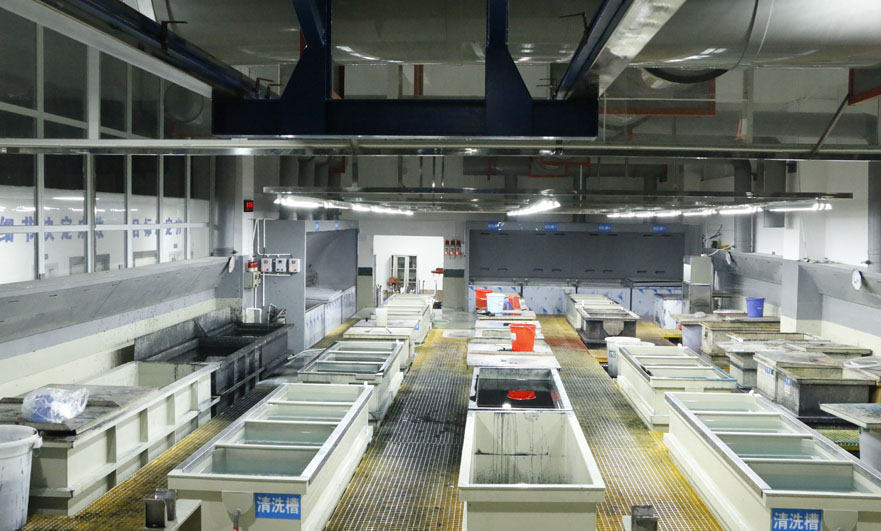15 years one-stop China custom CNC machining parts factory

Hey there I’m VMT Sam!
With 25 years of CNC machining experience we are committed to helping clients overcome 10000 complex part-processing challenges all to contribute to a better life through intelligent manufacturing. Contact us now
 135 |
Published by VMT at Jan 03 2022
135 |
Published by VMT at Jan 03 2022
Significance of surface treatment: The general surface treatment engineering process is grinding, preparation, washing, washing, electrolysis, deesterification, washing, acid leaching and activated water, neutralization, washing, and electroplating.
Plating
Electroplating has the advantages of low cost and good appearance. It is currently the most commonly used coating for custom CNC machining parts. Zinc coating is relatively cheap and easy to electroplating. It is widely used for the protection of steel custom CNC machining parts, especially to prevent atmospheric corrosion or decoration, but has low anti-corrosion performance. Ordinary electro-galvanized salt spray test can reach more than 200 hours with special sealant within 72 hours, but the price is expensive, which is 5-8 times that of general galvanizing. Hydrogen embrittlement is prone to occur in the electroplating process, so bolts above 10.9 generally do not use galvanizing. The torque-preload consistency of electrogalvanized custom CNC machined parts is poor and unstable, and it is generally not used for important CNC machined parts that are connected. Lubricant coating after electroplating can also avoid this defect.
Oxidation
Blackening oxidation is the most commonly used coating for industrial custom CNC machined parts because it is the cheapest coating. However, this coating has no rust resistance and can only be tested in neutral salt spray for 3-5 hours, even in the presence of oil. The torque-preload consistency of blackened custom CNC machined parts is poor, which can be improved by lubricating the internal threads during the assembly process.
Phosphating
Many industrial custom CNC machining parts are phosphated and oiled, usually zinc phosphate and manganese phosphate. Phosphating is cheaper than galvanizing and has poor corrosion resistance. Oil should be added after phosphating. Corrosion resistance is closely related to oil performance. For example, the neutral salt spray test only takes 10 to 20 hours after the phosphating of the general anti-rust oil, and only 72 to 96 hours for the oil with good anti-rust effect. Zinc phosphating lubrication is better than manganese phosphating. Manganese phosphating has good corrosion resistance and good wear resistance. It can be used in the range of 107~204℃. Phosphating torque-pre-tightening consistency is very good, and it is often used for some important CNC machined parts of the connection, such as steel structure connection pairs, engine connecting rod bolts, nuts, cylinder heads, main bearings, flywheel bolts, wheel bolts and nuts. Phosphating of high-strength bolts avoids hydrogen embrittlement, so phosphating surface treatment is generally used for bolts above 10.9 in the industrial field.

Sandblasting
The sandblasting process uses compressed air as the power to form a high-speed jet. Spraying materials (copper ore, quartz sand, corundum, iron sand, Hainan sand) are sprayed on the surface of customized CNC machined parts at high speed. Thereby changing the appearance of the outer surface of the customized CNC machined parts. Due to the impact and cutting effect of the abrasive on the surface of the customized CNC machined parts, the surface of the customized CNC machined parts has a certain degree of cleanliness and different roughness, so that the mechanical properties of the surface are improved.
Shot blasting
Shot blasting uses a high-speed rotating impeller to throw a small steel shot at high speed and hit the surface of a customized CNC machined part. Therefore, the oxide layer on the surface of the CNC machined parts can be removed. At the same time, the steel ball hits the surface of the CNC machined part at a high speed, causing the surface lattice of the custom CNC machined part to be deformed. Increasing surface hardness is a way to clean the surface of CNC machined parts. Shot blasting is usually used to clean the surface of castings or strengthen the surface of CNC machined parts.
Functional shot blasting is to remove surface oxides and other impurities to improve the appearance quality of customized CNC machined parts. It can improve the fatigue fracture resistance of the material CNC machined parts, prevent fatigue failure, plastic deformation and brittle fracture, and improve the fatigue life.
Polishing
Polishing refers to the use of mechanical, chemical or electrochemical effects to reduce the surface roughness of custom CNC machined parts to obtain a bright and smooth surface. Polishing does not improve the dimensional accuracy or geometric accuracy of CNC machined parts, but its purpose is to provide a smooth surface or mirror finish, and sometimes it can eliminate gloss (matting). It uses polishing tools and abrasive particles or other polishing media to modify the surface of custom CNC machined parts.
Satin finish
The process of CNC machining the surface of metal parts with brush wheels made of metal wire, animal hair, natural fibers or synthetic fibers.
It is used to clean the surface of CNC machined parts, mainly used in plate electroplating and coating production lines in metallurgical factories.
Ready To Start Your Next Project?
Get Instant Quote

Request a Free Quote
Send us a message if you have any questions or request a quote. We will get back to you ASAP!